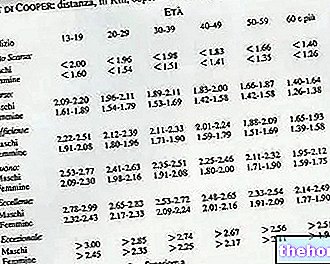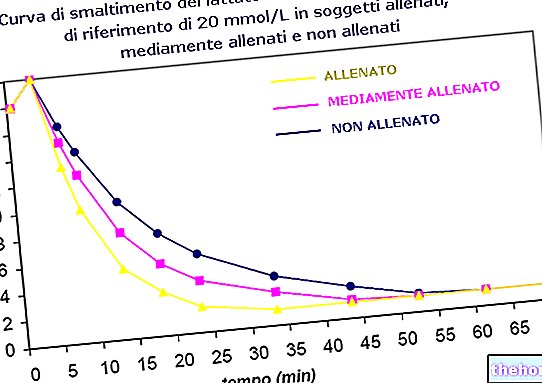What is ALAttacido anaerobic metabolism?
ALAttacido anaerobic metabolism is a method of energy production, typical of muscle tissue, which does not require the use of oxygen and does NOT produce lactic acid; it uses the creatine phosphate (CP) substrate and is able to function fully for only a few seconds It is a metabolic system typical of very short-term efforts which does NOT involve the waste of acid molecules.
What is the anaerobic metabolism ALAttacido used for?
ALAttacido anaerobic metabolism is a method of energy production that is only useful in the muscular contraction typical of STRENGTH performance, whether it is pure strength (maximal), explosive strength (power), fast strength and elastic strength.
NB. In resistant force, the anaerobic ALAttacid metabolism plays a marginal role compared to the anaerobic lactacid metabolism.

Mechanism of the anaerobic system ALAttacido
It is now established that the energy present in the form of ATP (adenosine tri phosphate) in the muscles is insufficient for intense muscular work and that the ADP (adenosine phosphate which must be recharged with ATP) requires the reconstitution of a phosphate group for its functioning (ADP + P = ATP); to do this, the muscle fiber can exploit three mechanisms:
- the anaerobic metabolism ALAttacido which exploits phosphocreatine
- the anaerobic lactacid metabolism that exploits the anaerobic glycolysis (glucose breakdown) with the production of lactic acid
- aerobic metabolism which exploits the oxidation of carbon chains in the presence of oxygen.
ALAttacido anaerobic metabolism, also called the phosphocreatine pathway, develops as follows:
ADP + CP = ATP + C Lohmann reaction

In which sports the anaerobic metabolism ALAttacido is involved and how it trains
The ALAttacido anaerobic system is an energy production mechanism typical of sports that provide for the maximum delivery of energy in a rather short time; this is the case of weight lifting and contractions of elastic and explosive force: running in 100 meters flat or with obstacles, jumps (high and long), throws (weight, javelin, hammer and discus) etc.
ALAttacido anaerobic metabolism must be trained through two distinct but complementary methods:
- Carrying out the muscle-building activity
- Transformation of the general capacity obtained in the specific athletic gesture
From a theoretical and methodological point of view, the metabolic pathway of phosphocreatine can be trained above all through strength development tables. Wanting to separate general muscle preparation from the specific one as above, in the initial phase of the year the use of overloads plays a fundamental role, while approaching the competition period it is essential that the results obtained in the development of strength are transformed into the specific athletic gesture.
Ultimately, the ALAttacido anaerobic metabolism can significantly improve thanks to the development of strength; the latter, thanks to the training stimulus (which will amount to approximately 10 seconds - max 8 repetitions in the use of weights) determines an exhaustion of the muscle stores of CP which, due to the principle of supercompensation, should be completely reconstituted and, albeit slightly, greater.
Improving ALAttacido anaerobic metabolism with food and supplements?
The substrate of the ALAttacid anaerobic metabolism is creatine phosphate, also called guanidinacetate. From a chemical point of view, CREATINE is an amino acid that can be introduced into the diet because it is present in meat and fish, but it is also easily synthesized by the body (liver, kidney and pancreas) starting from arginine, methionine and glycine.
The phosphocreatine present in skeletal muscle represents 60% of the total, while that in free form 40%. NB. Non-enzymatic degradation of creatine gives rise to creatinine, a compound filtered by the kidneys and excreted in the urine.
From the integrative point of view, the intake of creatine can take on a useful or useless role according to the predisposition of the subject. It has been shown that 30% of athletes who supplement with creatine DO NOT improve the efficacy of the anaerobic metabolism ALAttacido as it does not absorb it and / or does not metabolize it correctly, therefore supplementation can be absolutely useless.
Assuming that the athlete is not within that 30%, to be effective, the creatine supplementation must take place correctly and optimally; first of all it is advisable to use already buffered products or to associate alkalizing agents with simple creatine in order to favor their integrity in the gastric passage and intestinal absorption. Secondly, it would be advisable to associate it with a carbohydrate source with a high glycemic index to create an insulin peak useful for the metabolization of circulating creatine; the most correct modality foresees the assumption of 20g of glucose every gram of creatine to be taken in separate moments: first the carbohydrates (in order to create the right anabolic environment) and after 30 minutes the buffered creatine.


.jpg)

























